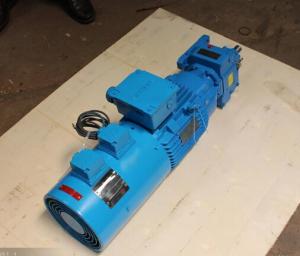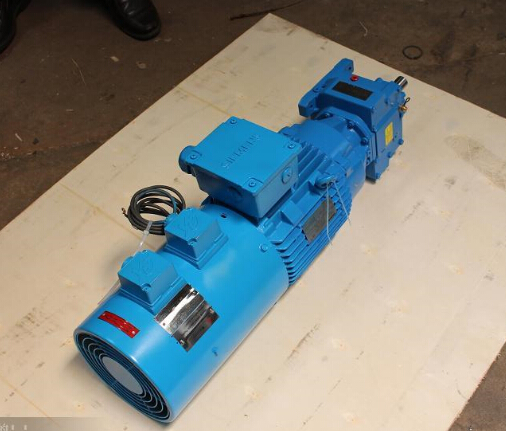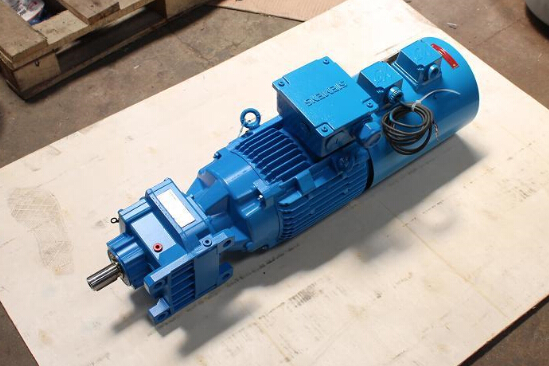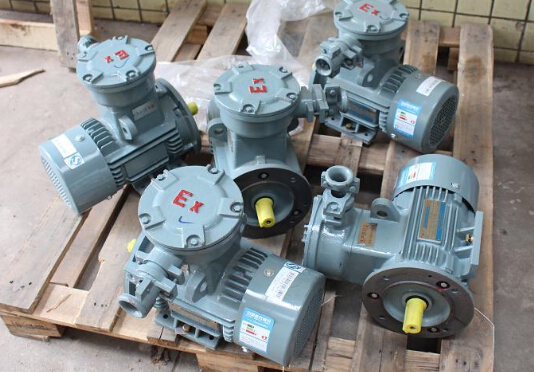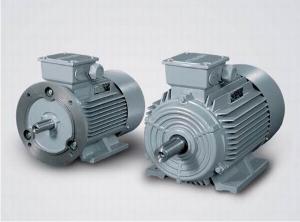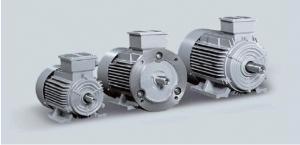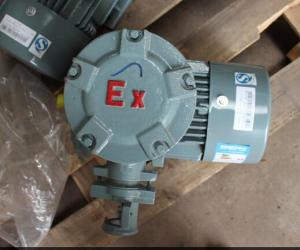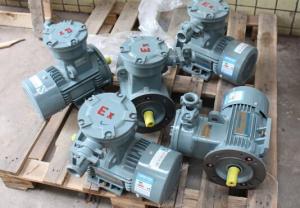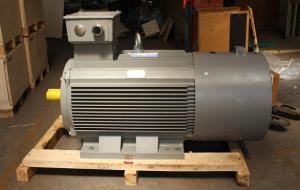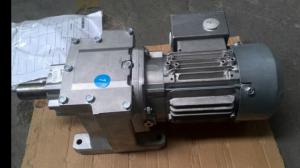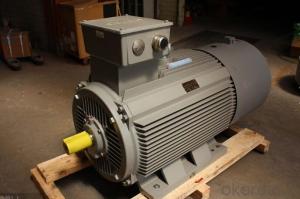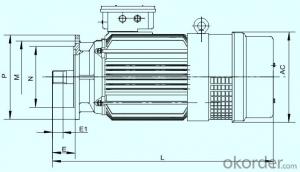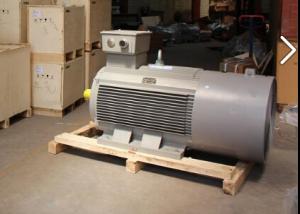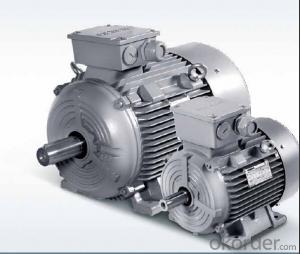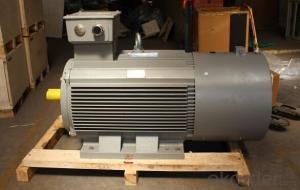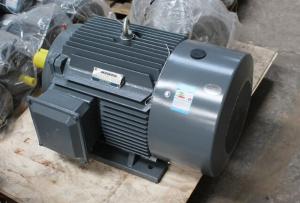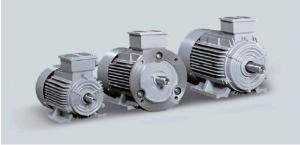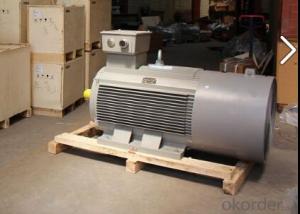Siemens Reducer Gear Motor
- Loading Port:
- China Main Port
- Payment Terms:
- TT OR LC
- Min Order Qty:
- -
- Supply Capability:
- -
OKorder Service Pledge
Quality Product, Order Online Tracking, Timely Delivery
OKorder Financial Service
Credit Rating, Credit Services, Credit Purchasing
You Might Also Like
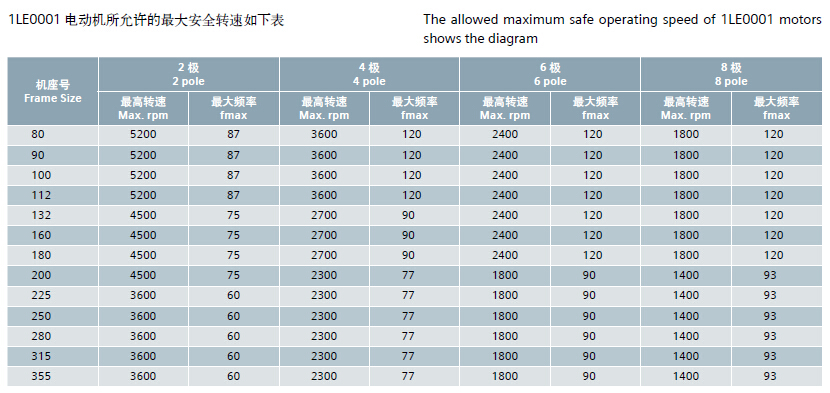
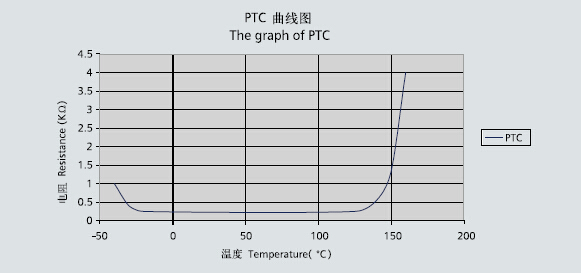
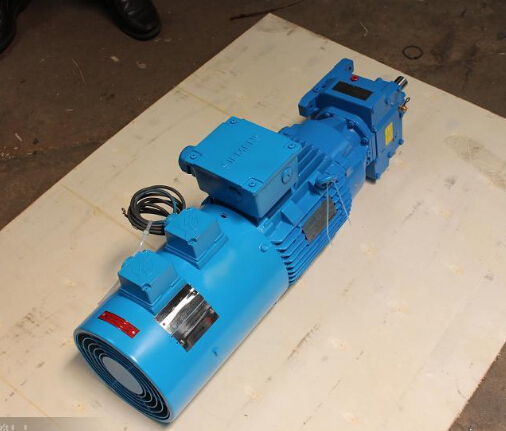
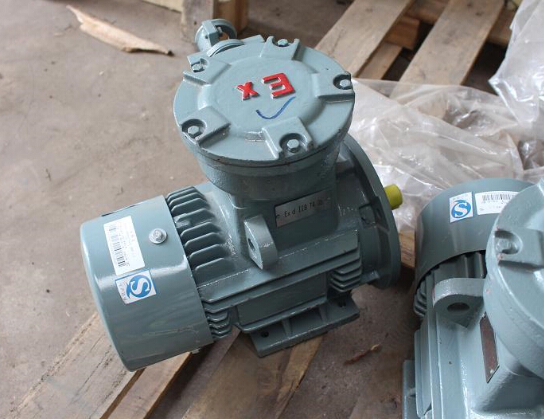
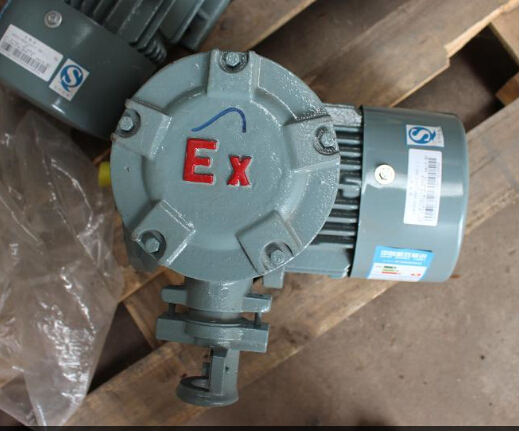

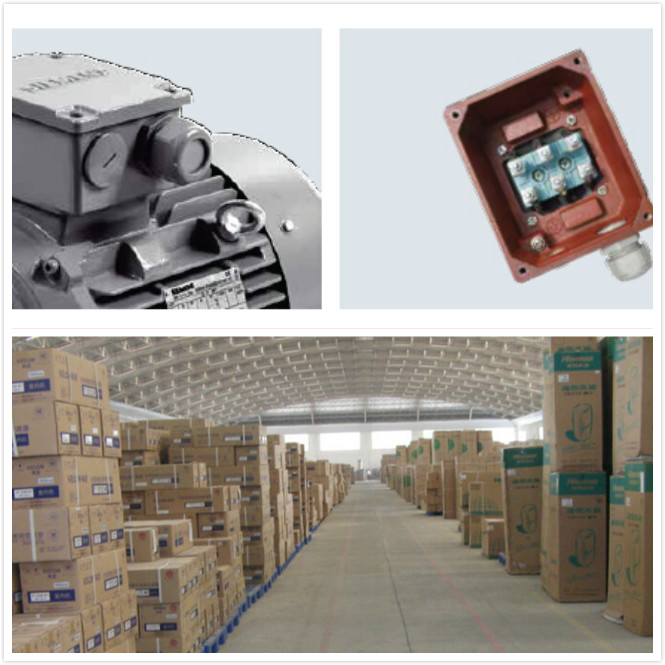
- Q: If I have an AC electric motor with 3 wires instead of two, how do I modify the wiring to be able to connect it to a home-built transformer? (to boost the voltage created by the motor acting as a generator)
- If this really IS an AC motor and has 3 wires, it's 3 phase. If it's an AC motor single phase, 1 of the wires is for another purpose e.g. capacitor connection. So if it is marked brushless, it could be a 3-phase model aircraft type motor, which will require its mating speed controller/ 3- phase (battery or DC fed) controller. The other possibility is you have a 3- wire computer brushless DC fan motor, 2 are for connection to DC, and the 3rd. is a rotation confirmation signal wire. Further. Transformers output AC. A motor running as a generator cannot possibly boost its voltage. I'm glad you haven't mentioned joule thief''' this time. You still have not stated EXACTLY what you are trying to achieve, or maybe this is the start of another brand new misconception re electrics/ electronics?
- Q: I know AC is more expensive and DC does quite have the performance... but I'd like a secondary input. Cost is of no matter, however performance, torque, maintenance, and efficiency are all concerns.
- If you look at motors like the Tesla motors motor or the UQM powerphase 150, it's obvious that AC has more potential power to weight. But you can't buy either one of those motors, no matter how much you're willing to pay. They're only available e to manufacturers. Of the motors you can actually get, DC is just as good. Power and peak efficiency are about the same, AC being slightly more efficient. AC can rev a little higher in general and DC has more torque. So you gear down the AC a little farther to get the same acceleration. Gearing it down also gets the motor in it's peak efficiency range sooner, but if you use a transmission (which I don't like doing, you shouldn't have to with the right motor) that's not a factor. The power band is generally a little wider on an AC motor but that's only a benefit at higher speeds. For cost do benefit you might as well just get a DC motor.
- Q: my group of hot rodders was sitting around the shop discussing building a electric car we are all looking for a plan next week we are meeting to discuss the plans we will be using when we draw up are cumulative ideas we will come up with the best ideas,hopefully. we are craftsmen at are hobby(lifestyle) but normally making a auto go fast 4 dollar gas has changed our thought pattern .if you have any ideas, with all your help my plans could be best. Thanks to all. lets get opec.
- The older ones use DC. The newer ones use AC. But if you're going to build your own, try to copy the EV Grey motor. It taps into the zero point and therefore can operate at over-unity efficiencies.
- Q: pump specification abbseallesspumps,hmd kontro lcie04atex6152 model
- A lot of motors have 6 wires for the three windings, so you can connect them as star or delta, as required with a star delta starter. The voltage ratings will tell you though. If it is a 380V, 415V, 440V etc. motor and it is connected as star it has a lot less power. If its 220 you have to figure out whether that was for a 127/220 or a 220/380 system. As a check, ((W x 1/PF) / Amps) from the nameplate gives the phase to neutral voltage, or W/A is close enough to tell. Always check the running current when you have installed a motor. Don't forget that the phase rotation may be important for a pump. If a water pump goes backwards there is steam and boiling water everywhere.
- Q: The AC motor has 5 wires, 2 brown color, 1 red color, 1 black color, and 1 white color. I need to connect it to 110 Volts ( 2 wires)
- Do NOT blindly use black and white and leave the others open. You could burn out a winding. The motor needs a specific configuration. You really should use the nameplate data to get more information. There is no simple color-coding scheme for all motors.
- Q: What about the capacitance of the AC motor?
- A little bit, that's OK. If it's big enough, it's easy to burn the motor. You can try it yourself and switch on the new capacitor for a while. (nothing is less for a moment) and see if it is not immediately fever, if it is, then you still use the capacitor motor much of it, but I think you'll change a big try the same as before
- Q: I have a AC motor of 230V/50HzI have a circuit that senses a light signal.I want to operate the motor (say, for closing a door) whenever the circuit senses the light on, and reopen the door whenever the light goes off, what motor controller or other circuit can be used?
- photoelectric cell, and a latch circuit
- Q: Expansive speed control Not able to operate at low speed Are there anymore Disadvantages?
- Speed Control The main disadvantage of AC motors, when compared with DC motors, is that their speed is more difficult to control. AC motors can be equipped with variable frequency drives, which provide smooth turning moment, or torque, at low speeds and complete control over the speed of the motor up to its rated value. Variable frequency drives improve speed control, but do create losses with reduced power quality. Control Complexity The device used to control an AC motor, known as an AC drive, is typically more complex than that used to control a DC motor. An AC motor controller must convert AC mains electricity to DC, and convert DC back again to an adjustable frequency and voltage output to the AC motor. By contrast, a DC motor has a separate field, or excitation, and power circuits, requiring just a single power conversion from AC to DC -- so the circuitry of a DC motor controller is simpler. Power Torque Historically, another disadvantage of AC motors has been that they develop less power, or less torque, per frame size. Research conducted by Rockwell Automation compared typical, commercial AC and DC motors in industry standard National Electrical Manufacturers Association (NEMA) frame sizes, and found this to be the case. However, AC and DC motors employ different classes of insulation and have different service factors -- the overload capacity at which the motor can operate without damage -- so direct comparison is not always straightforward. Other Disadvantages AC motors are typically more expensive than DC motors for most horsepower ratings. If the rotor of an AC motor rotates faster than the speed command of the AC drive, the motor acts as a generator and pumps, or regenerates, energy into the drive. If the drive cannot absorb this energy, the drive will switch off, or trip, with a fault. AC drives capable of regeneration are more complex and more expensive than DC regenerative drives. AC motors may also produce more audible noise than DC motors.
- Q: We are using single phase AC capacitor start run Induction motor.I want to know the same motor can be changed to three phase motor or not.If it is possible what are parts i have to change.
- You'd have to replace the motor guts with the motor guts of a three-phase motor; single-phase and three-phase motors are totally different. For example, a 3 phase motor has starting torque while a single-phase motor requires a shading coil for starting. So it's not economical; just buy a real 3-phase motor. However, you can in principle hook up a single phase AC motor between two poles of a three-phase electrical installation (provided of course the motor's rated for the supply system voltage).
- Q: how to reduce single phase AC motor speed?
- One way - the crudest - is to install a Resistance in between the origin and the end (series). Other more intelligent ways include transforming the cycle of the AC (120 Volts, 60 cycles) via Capacitors (this will chage the relationship between the Current (I in Amperes) and E (Voltage, in volts). For instance: if they use a big Capacitor in series with the feed of the motor, the Current will increment instantaneously, making the E (voltage to drop considerable). This will change the relationship (the more Amperes) the Less voltage. This will be fed to a circuit that will trigger (let go the charge of the Capacitor, discharging it rapidly and stopping the process in the way), generating a blow, a hit to the motor, that will last a mere fraction of the time interval, but creating enough torque for the motor to continue strong. Then the next pulse, and so forth, hundreds of times a minute. second or whatever. They were originally (they modified them again and again, many times, creating new things all the time!) called pulse motors, then, micro motors, etc Some may suggest to add more poles, but that would debilitate the motor output: more poles, less torque. You need more current, less voltage. This is called the Cosine Phi in this relation. When you change it, you generate torque (strength). All IS a relationship. The latest is brushless AC motors used in the industry to move heavy elements very rapidly and accurately.
Send your message to us
Siemens Reducer Gear Motor
- Loading Port:
- China Main Port
- Payment Terms:
- TT OR LC
- Min Order Qty:
- -
- Supply Capability:
- -
OKorder Service Pledge
Quality Product, Order Online Tracking, Timely Delivery
OKorder Financial Service
Credit Rating, Credit Services, Credit Purchasing
Similar products
Hot products
Hot Searches
Related keywords
